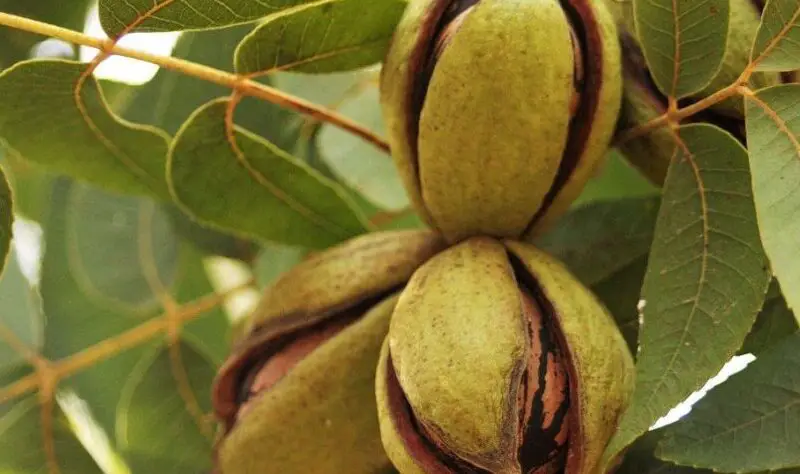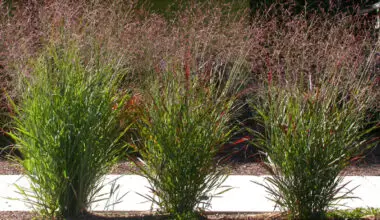A viable pecan (the seed) is the product of cross-pollination (sexual reproduction) between two pecan or walnut trees, a tree in the Juglandaceae family. Its genetic makeup differs from that of one of the parents and the potential to become a pecan tree differs unpredictably from either parent.
If you want to grow a pecan tree with the characteristics of a particular variety, you must use a clone of that variety.
This is usually accomplished by grafting a cutting (called a scion) of the desired variety onto a growing, well-rooted plant (the rootstock) of any type of pecan tree. The scion has exactly the same genotype as the tree from which it was cut and is therefore a clone of that tree and will have exactly the same characteristics.
Contents
Stratifying a pecan tree
What the soil looks like after the pecans fall and just before they are buried and stratified if they are not collected.
Pecans would normally fall to the ground in the fall and be buried by natural processes. The seed would then sleep through the winter (a process called stratification) and germinate the following spring.
We can simulate the natural stratification process indoors while protecting the seeds from mold and rodents.
Pecan trees can be grown in hardiness zones and prefer warmer southern climates.
How to plant a pecan tree?
Harvest intact, ripe pecans in the fall after the shells have turned from green to brown. Shake the nuts off the tree rather than picking them up from the ground to prevent the nuts from already being attacked by fungi or insects. Use a sharp knife to cut the shells from the nuts.
Store the nuts in a plastic bag for 30-90 days at 37-41°F. A regular refrigerator will do the job just fine.
Soaking the nuts can speed up the layering process.
Place a damp paper towel or moistened sand in the bag to prevent the nuts from drying out.
In early spring, the seeds should be removed from the refrigerator and stored at 68-86°F for a week or two, then soaked in water for a few days. The seeds will begin to split after soaking and will then be ready for planting.
Pecan trees have long tap roots, so it is best to plant the seeds in the soil where you want them.
If you are starting with pots, use deep nursery pots as the root can grow up to a foot down before the top even emerges from the soil. Use a potting mix of half loam and half sand. Sow the seeds at a depth of 4 inches. The following spring, the plants should be about 6 inches tall. It will take 5 to 10 years before nut production begins.
Where to plant the pecan tree?
This tree has no tolerance for salty or oxygen-poor soils. It has only a low tolerance to temporarily dry soils as well as to calcareous soils. Pecan trees should be reserved for non-mountainous regions even if they can withstand temperatures down to -4°F. They need a frost-free period of at least 6 to 7 months.
Grow it as an ornamental tree on grass or in wooded gardens. Pecan trees grow very tall, plant them with this in mind.
Plant it in a large container, at least 100 l or in the ground, but in both cases in full sun. Trees in a container have very little chance of bearing fruit.
When to plant the pecan tree ?
Planting is done from January to May.
The more robust your plant will be, the earlier you can plant it. For example, a plant bought in a 1 or 2 l pot is planted later than a plant from a 5 or 7 l pot.
Cultivation and maintenance of the pecan tree
During the first 6 months after planting, provide the tree with 30 to 50 liters of water per week. However, it should not be left in soggy soil.
Once the tree becomes mature, after 3 to 5 years (for a grafted plant), watering is essential during the period when it fills with nuts in late summer. In a dry region, a large amount of water is needed every day to ensure that the nuts do not remain small or mealy.
Mulch the base of your tree in a thick layer, also over a good width. This is to conserve moisture but especially to prevent the growth of weeds.
Harvesting pecans
When and how to harvest pecans?
For an optimal production of fruits, it is preferable to have 2 trees close to each other to benefit from a cross-pollination.
The harvest is done mechanically for professional producers. For the individual, use a telescopic fruit picker or climb the tree!
In both cases, the harvest is done between mid-August and mid-November, depending on the summer in your region.
The conservation of pecan nuts
Let the seeds dry undercover until they are easily broken. Once removed from their husk, place them in a plastic zipper bag in the refrigerator set at 45°F. Store under these conditions all winter.
Pruning the pecan tree
This tree does not need pruning, except for aesthetic reasons.
Depending on the use and the space available, it is possible to prune it in early spring, but without removing more than a third of its vegetation.
Diseases, pests and parasites
The most common problems encountered are: fungal leaf spots such as powdery mildew, crown gall on the trunk.
Spray your tree as soon as the heavy rains are over with a specific fungicide, preferably systemic.









